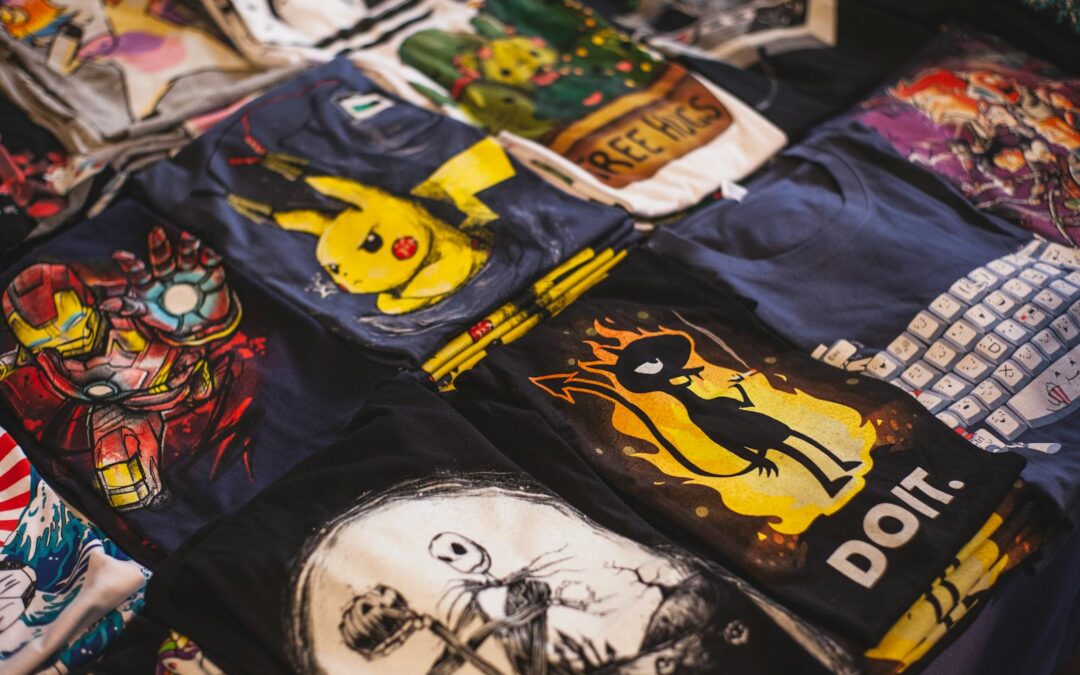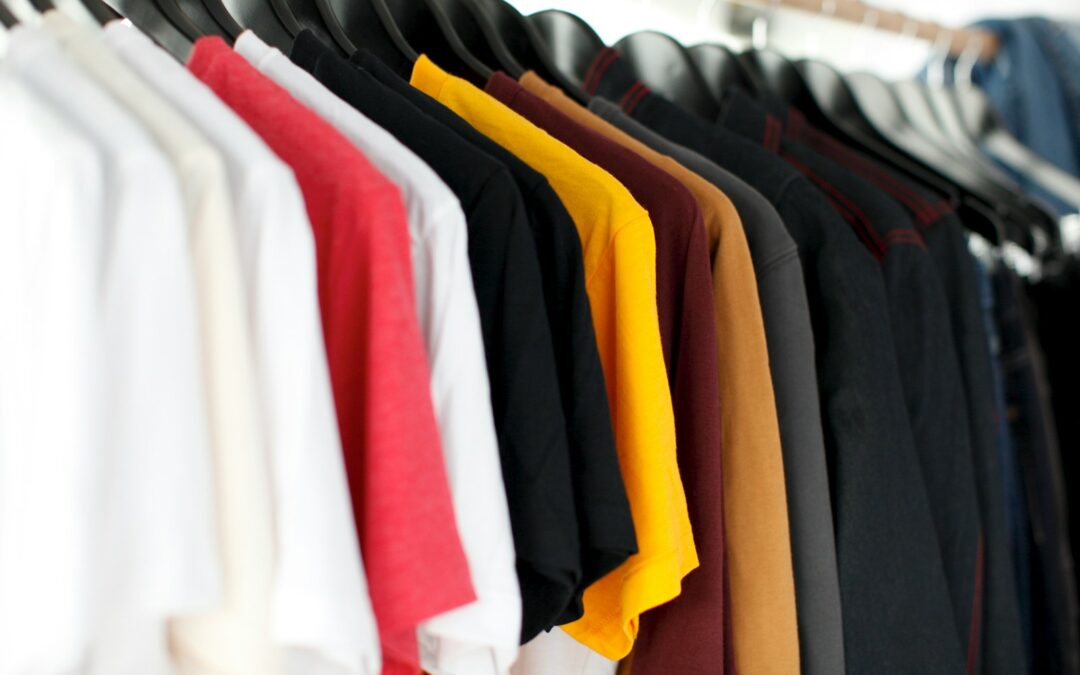Have you ever wondered what does DTF stand for?
Direct-to-Film (DTF) printing, a cutting-edge technique in the printing industry, is transforming the way businesses and hobbyists create custom designs for a wide variety of applications. From vibrant t-shirts to durable workwear, this method is becoming the go-to solution for small businesses interested in offering high-quality designs with minimal setup.
Whether you’re new to the concept or exploring an alternative to traditional printing methods like screen printing, this guide will walk you through what DTF printing is, how it works, its benefits, and how you can get started.

What Is DTF Printing?
DTF stands for Direct-to-Film printing, a process that allows users to print designs onto special PET (polyethylene terephthalate) film before transferring them onto fabrics. Unlike traditional methods, DTF doesn’t require screens, making it accessible for small operations or those just starting out.
Quick Overview of the DTF Process:
- Designs are printed onto PET film using a specialized printer and ink.
- A hot-melt adhesive powder is applied to the printed film.
- The print is heat-pressed, transferring the design onto the desired material.
The result? High-quality, vibrant, and durable designs that can stand up to repeated washes and wear.
How Does DTF Printing Work?
Direct-to-Film printing follows a fairly straightforward process, but its results are anything but simple. Here’s a step-by-step look at how it works:
- Design Creation: Using design software, the artwork is prepared and formatted for printing. The design is then printed onto PET film using specialized DTF printers and a unique ink set (typically a combination of CMYK and white inks). This ink ensures detailed, full-color designs.
- Adhesive Application: The printed film is coated with a fine layer of hot-melt adhesive powder. This powder acts as the “glue” to transfer the image to fabric.
- Heat-Press Application: The film is heat-pressed onto the fabric or surface at a specific temperature and duration, transferring the design with precision and durability.
Unlike screen printing, DTF simplifies production by eliminating the need for multiple screens or extensive preparation, allowing faster turnaround times.

DTF Printing vs. Screen Printing
If you’re familiar with traditional screen printing, you might wonder how DTF stacks up. Let’s break it down:
Category
DTF Printing
Screen Printing
Setup Time
Minimal setup, no screens required
Lengthy setup for screens
Cost for Small Runs
Cost-effective for low-volume prints
High setup costs for small batches
Materials Used
Can print on cotton, polyester, and blends
Best for specific materials
Color Variety
Full-color prints in one pass
Separate screens for each color
Convenience
Ideal for detailed and multi-color designs
Better suited for bulk orders
While screen printing remains a strong choice for mass production, as do other printing methods, DTF’s versatility and affordability make it a game-changer for small businesses or creatives experimenting with custom designs.
Benefits of DTF Printing
DTF printing is quickly gaining popularity, and for good reason! Here’s why it stands out:
- Vibrant Results: Achieve sharp, full-color images with high resolution and rich saturation.
- Durability: Prints can withstand frequent washing and wear without fading or cracking.
- Versatility: DTF works on a wide range of materials, from 100% cotton to blends, polyester, and even non-fabric surfaces like wood or canvas.
- Cost-Effective: With no need for screens or extensive setups, it’s perfect for small runs and custom projects.
- Quick Turnaround: The streamlined process ensures less downtime and faster delivery, ideal for businesses on a tight schedule.

Man Printing On T Shirt In Workshop
Getting Started With DTF Printing
Want to explore DTF printing for your small business? Here’s what you’ll need to get started:
Equipment Setup:
- DTF Printer – Specialized printers like Epson modified series handle the job.
- PET Films – Transparent films designed for high-quality transfers.
- DTF Ink – Unique inks designed for durability and vibrancy.
- Hot-Melt Adhesive Powder – Essential for transferring the prints.
- Heat Press Machine – Required for setting the design onto the fabric.
Required Skills:
A basic understanding of graphic design software (like Photoshop) will help you create and format your designs. However, even beginners can master the process with practice.
Troubleshooting Common DTF Issues
Like any technology, DTF printing isn’t without its challenges. Here are the most common problems and how to solve them:
- Ink Bleeding: Ensure the right amount of adhesive powder and settings for the film are used.
- Poor Adhesion: Double-check that you’re using the correct pressure and temperature on the heat press.
- Image Distortion: Ensure PET film alignment and calibrate the printer regularly.
Regular maintenance of your printer and press will also go a long way in preventing issues.
Tips for Mastering DTF Printing
- Practice Makes Perfect: Experiment with different materials to perfect the settings for various projects.
- Invest in High-Quality Gear: Reliable equipment minimizes errors and produces the best results.
- Join Communities: Online forums and groups are great resources for insights and tips from fellow DTF enthusiasts.
- Stay Updated: Follow industry news and tutorials to stay ahead of trends and innovations.

The Future of DTF Printing
DTF printing shows no signs of slowing down. Advancements in technology, combined with the rising demand for personalized products, will continue to drive its growth.
Exciting developments, such as faster printers and improved adhesive materials, promise to make the process even more accessible and efficient. Small businesses can take advantage of this trend to produce custom apparel and promotional items that stand out in a competitive market.

Final Thoughts | What Does DTF Stand For?
DTF printing combines innovation, versatility, and ease, making it a standout choice for small businesses and hobbyists alike. Whether you’re creating custom t-shirts or printing promotional products, this method offers endless possibilities.
Intrigued? Start small, experiment, and build your way up to a professional operation. Remember, selecting the right equipment and maintaining it well are key to success in DTF printing.
Curious about kicking off your DTF printing venture? Check out Limitless Transfers here for supplies and equipment, and take your business to creative new heights.
Resources
Here are some valuable resources to explore and expand your knowledge of DTF printing:
- DTF Printing 101 – A comprehensive guide that covers the fundamentals of DTF printing, including equipment, processes, and troubleshooting tips.
- DTF Printing Suppliers – A curated list of reputable suppliers that offer DTF printing equipment, inks, transfer films, and other essential materials.
- DTF Printing Communities – Join online communities and forums dedicated to DTF printing. Connect with fellow enthusiasts, share experiences, and gain insights into the latest trends and techniques.
- DTF Printing Tutorials – Access a collection of step-by-step tutorials and video guides that walk you through various aspects of DTF printing, from prepping artwork to applying transfers.
- DTF Printing Inspiration – Explore examples of creative DTF printing projects and get inspired by the unique designs and applications achieved using this technique.
- DTF Printing Troubleshooting – Encounter any challenges while working with DTF printing? Check out this resource dedicated to troubleshooting common issues and finding solutions, ensuring smooth operations and optimal print results.
- DTF Printing Equipment Reviews – Explore comprehensive reviews of DTF printing equipment and tools. Gain insights into the performance, durability, and features of different products, helping you make informed decisions when investing in new equipment.
- DTF Printing Business Tips – Running a successful DTF printing business involves more than just technical knowledge. This resource provides valuable tips and strategies for marketing, pricing, customer acquisition, and managing your DTF printing venture, empowering you to thrive in this competitive industry.
Remember, continuous learning and staying up-to-date with the latest advancements in DTF printing will help you unlock the full potential of this innovative technology and propel your business to new heights.




